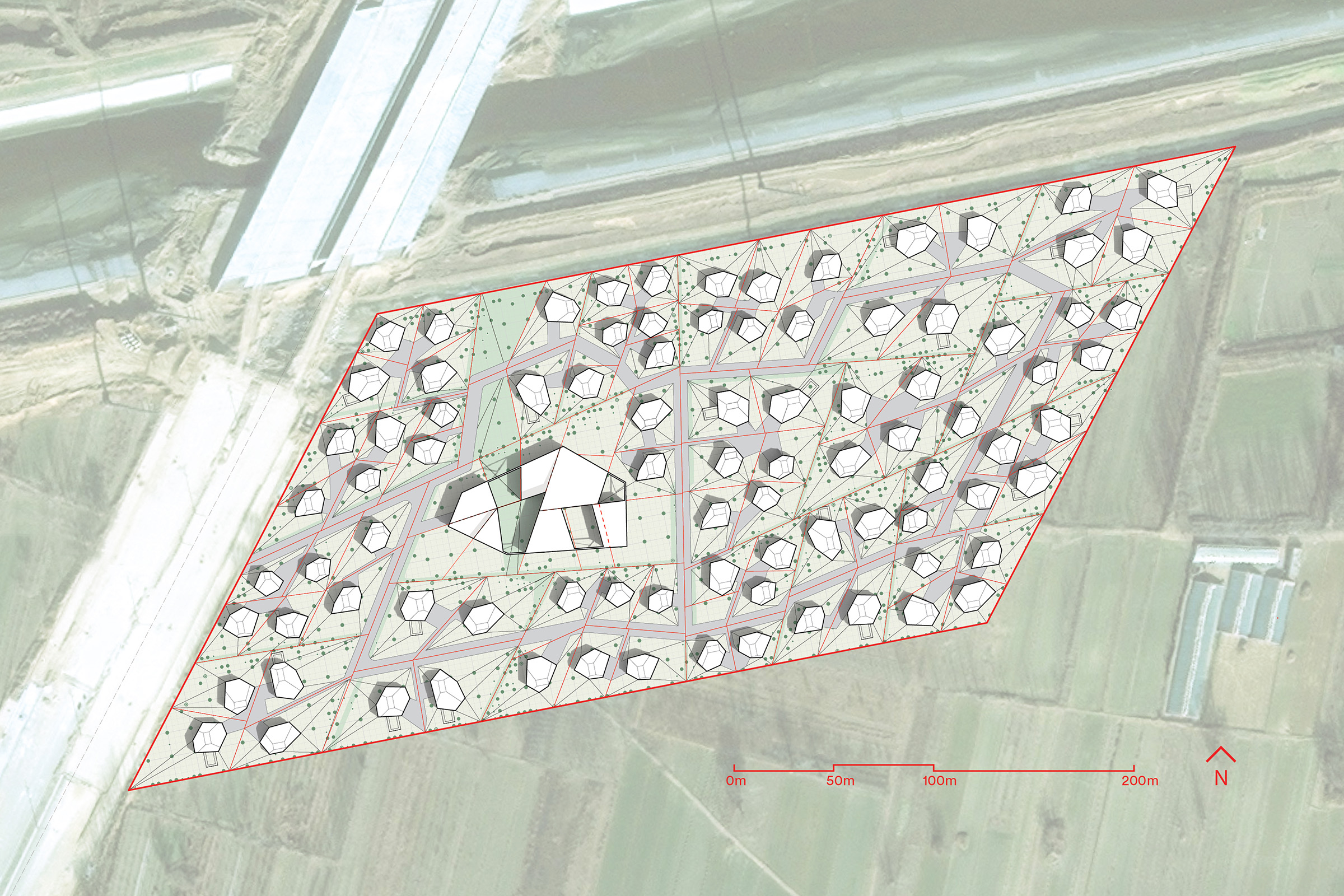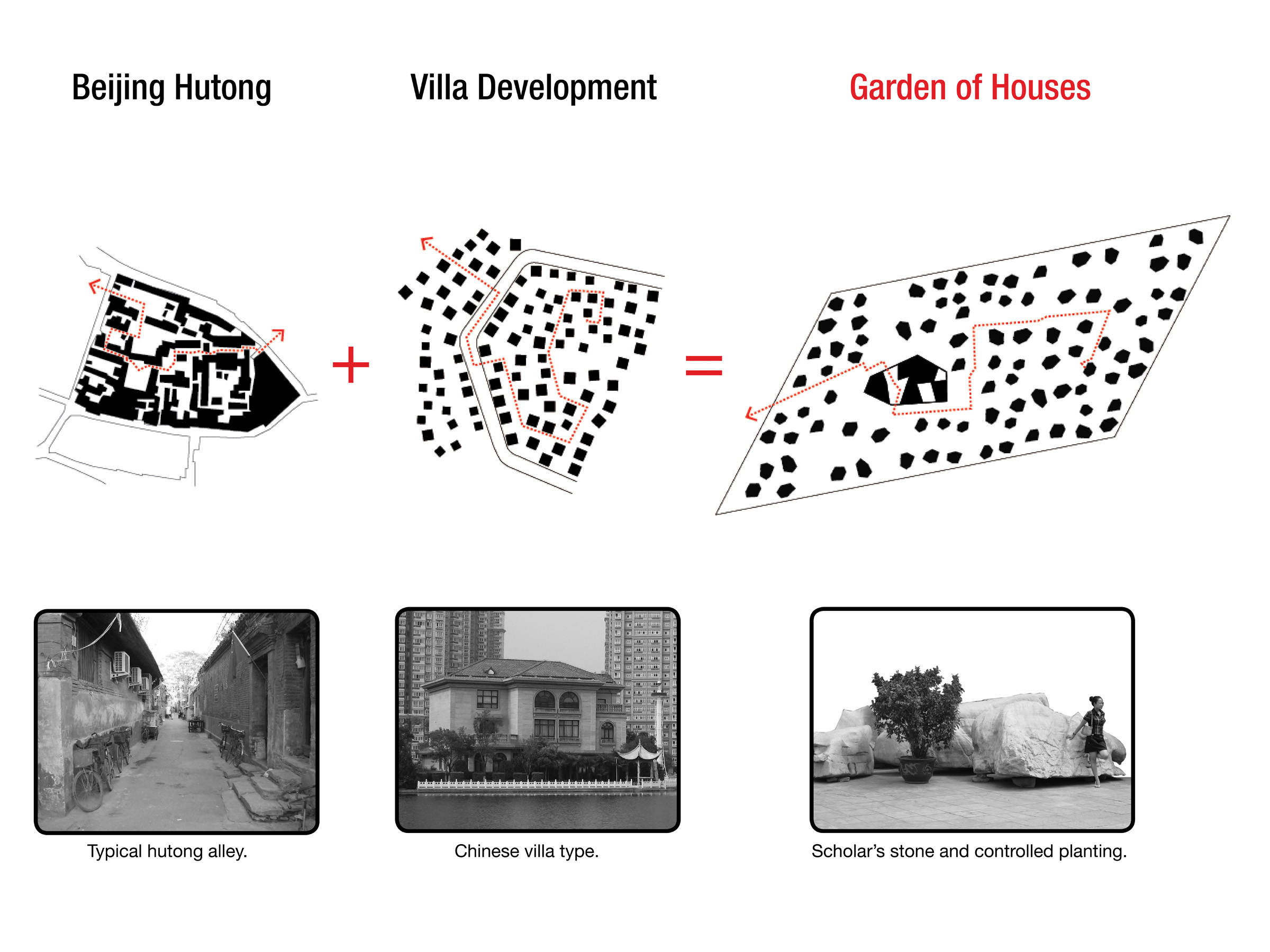
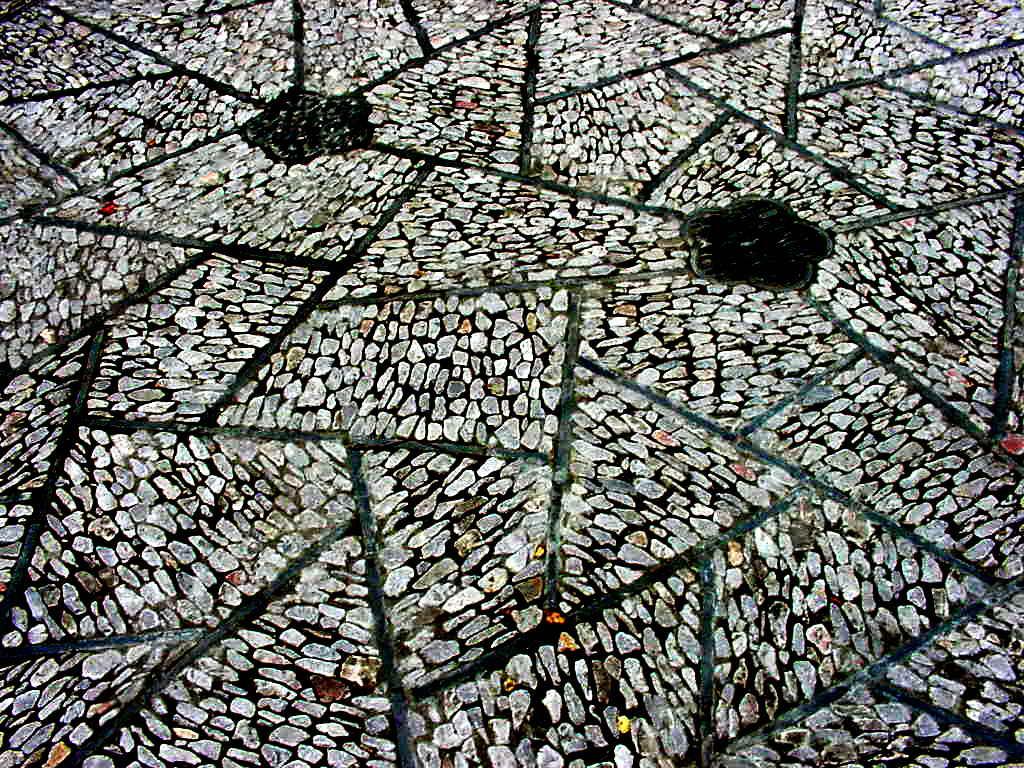
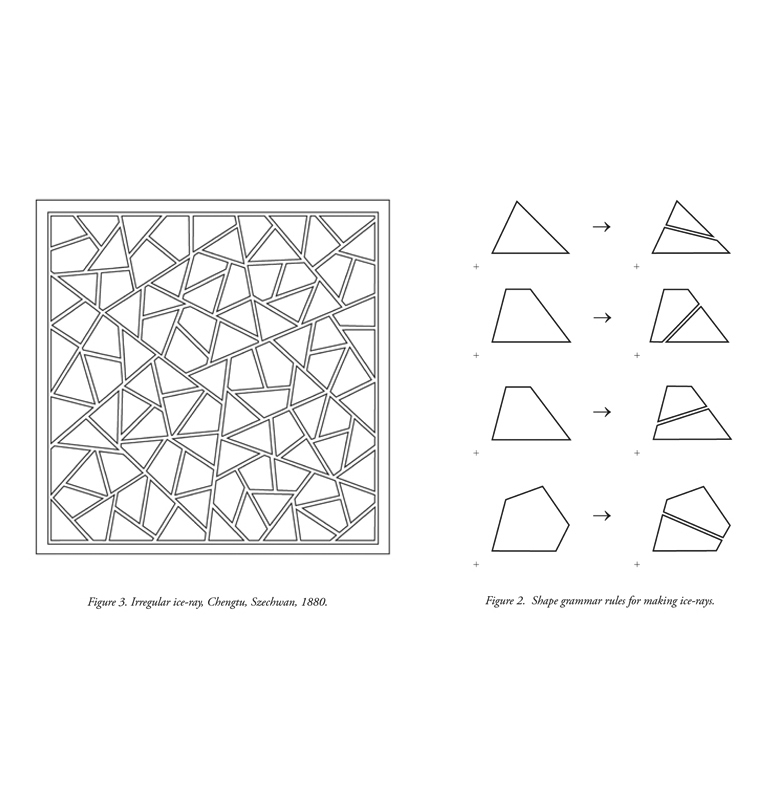
Traditional Chinese ice-ray examples; shape grammar diagram by George Stiny, MIT
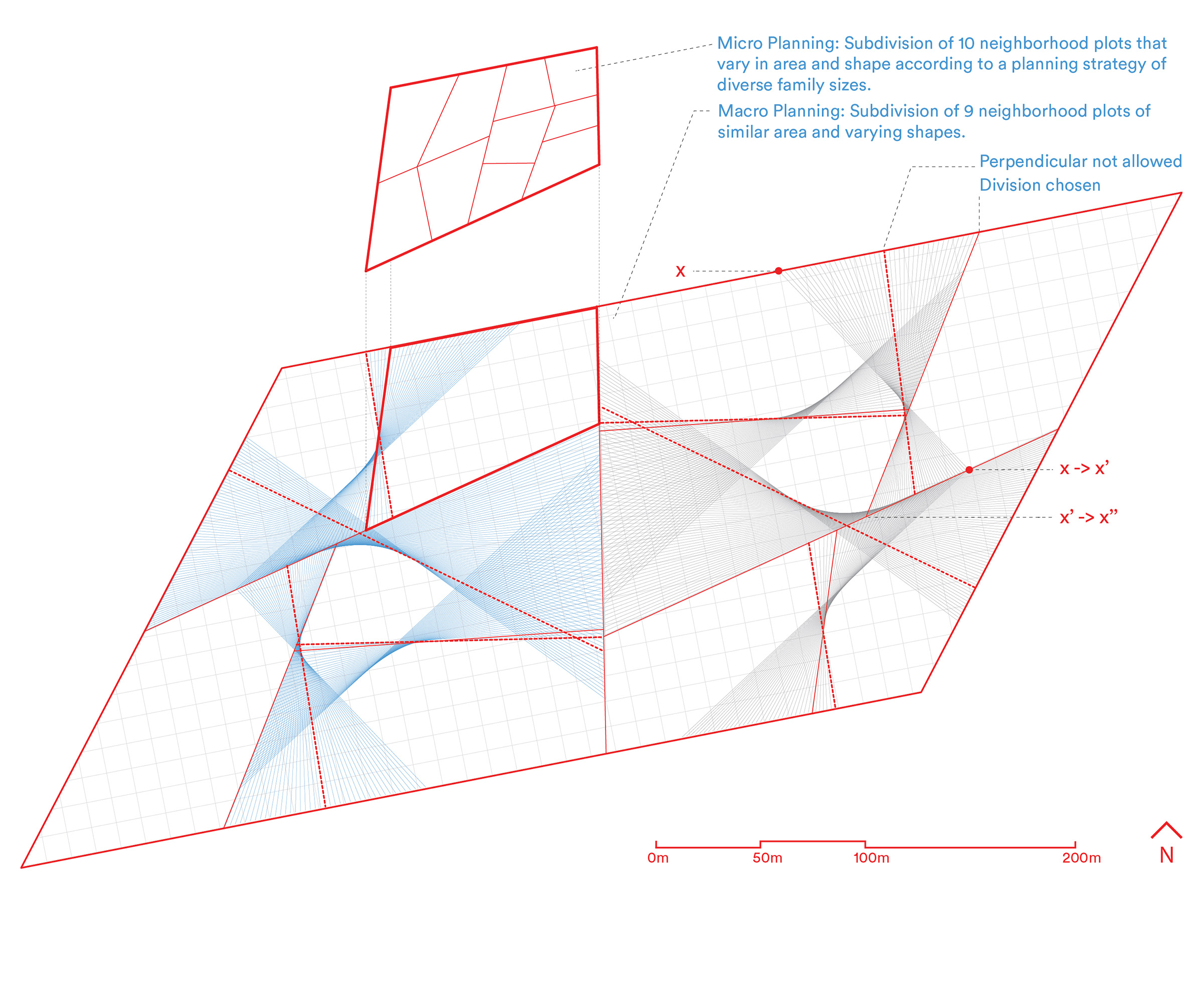
Computational Urbanism: We generated the plan algorithmically from pre-defined programmatic, site, and cultural parameters including Feng Shui principles and a highly prescriptive sustainable-site requirement (50% green rate). Adapted from a radically scaled-up traditional Ice-Ray lattice pattern, we created a site plan with a high degree of control as demanded by the project brief but garden-like looseness as desired for cultural relevance. Using an evolutionary problem solver (genetic algorithm) the plan has two nested levels of optimization: 1. 9 neighborhoods of equal area but varying shape, 2. within each neighborhood, 10 house lots of varying shape and size. A 10th neighborhood was given to the Clubhouse and public outdoor areas. A 3rd nested algorithm relates house form to site boundaries and incorporates Feng Shui relationships to neighbors and site features.
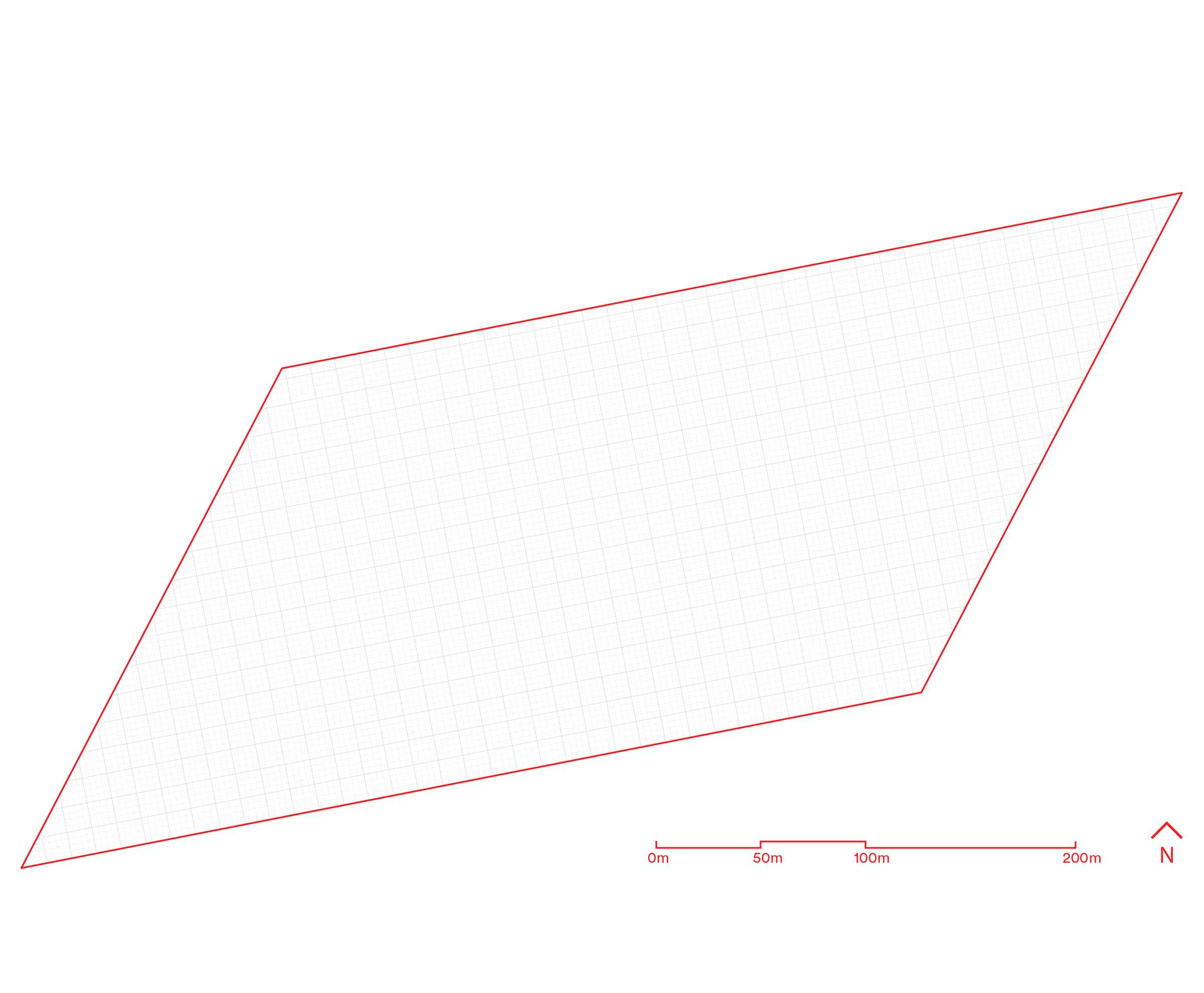
Site organization: 12-meter & 3-meter grids; ice-ray neighborhoods & lots; houses; roads; pedestrian ways; clubhouse
Green infrastructure: topographic inflections of varying scales define the surfaces of the neighborhoods and each house plot while guiding rainwater to a system of constructed wetlands and ultimately to the adjacent river. These wetlands are also part of a system of pedestrian and bicycle circulation through the site. We loosely defined exterior surfaces with a gradient of porous paving with density decreasing from roads towards the centers of each plot. Layered over this informal site plan is a rigid, 6m grid of planted beds with bamboo and specimen trees. We controlled all of these elements with the parametric and associative computer model to exceed the required 50% green rate.
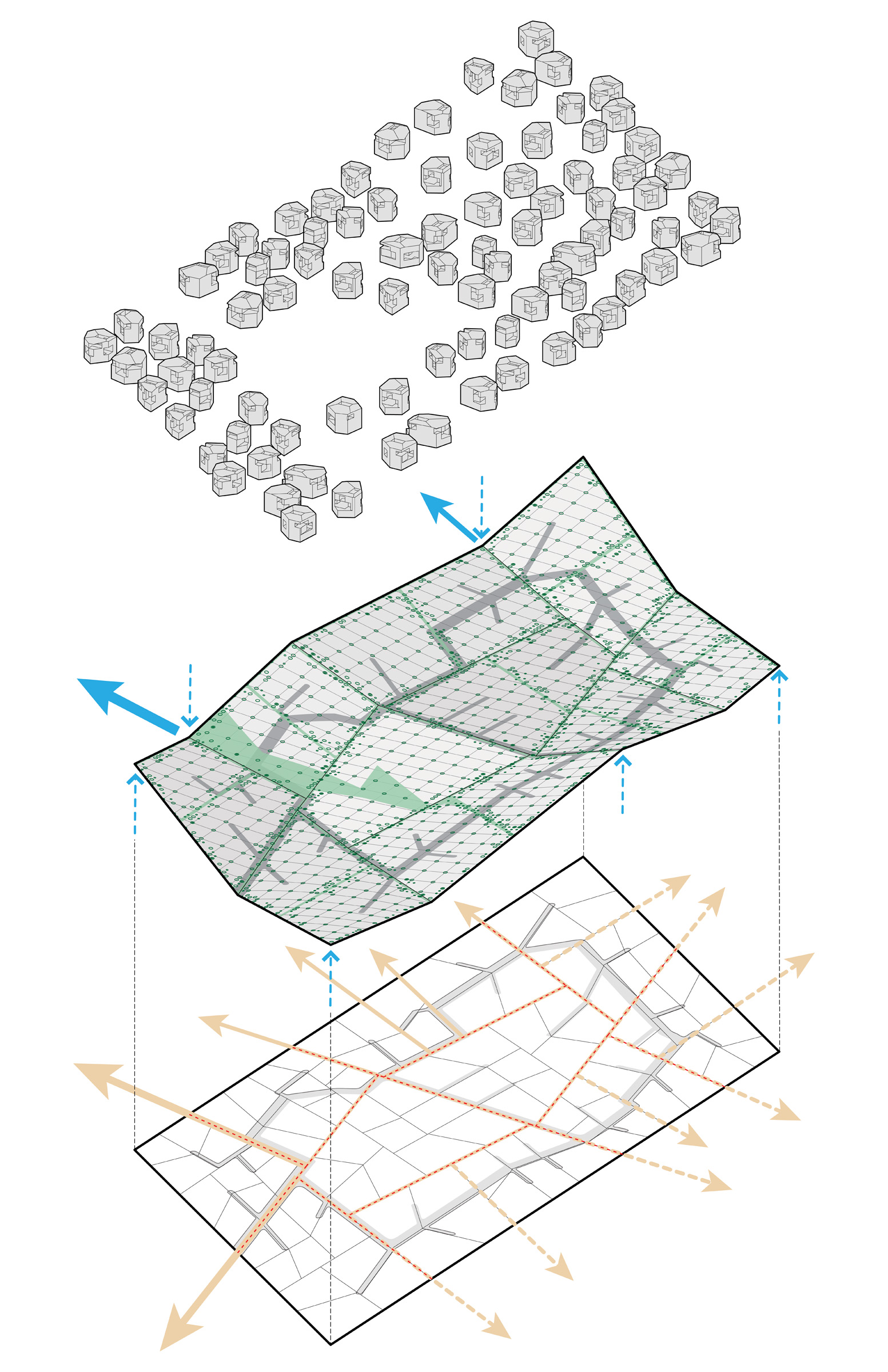
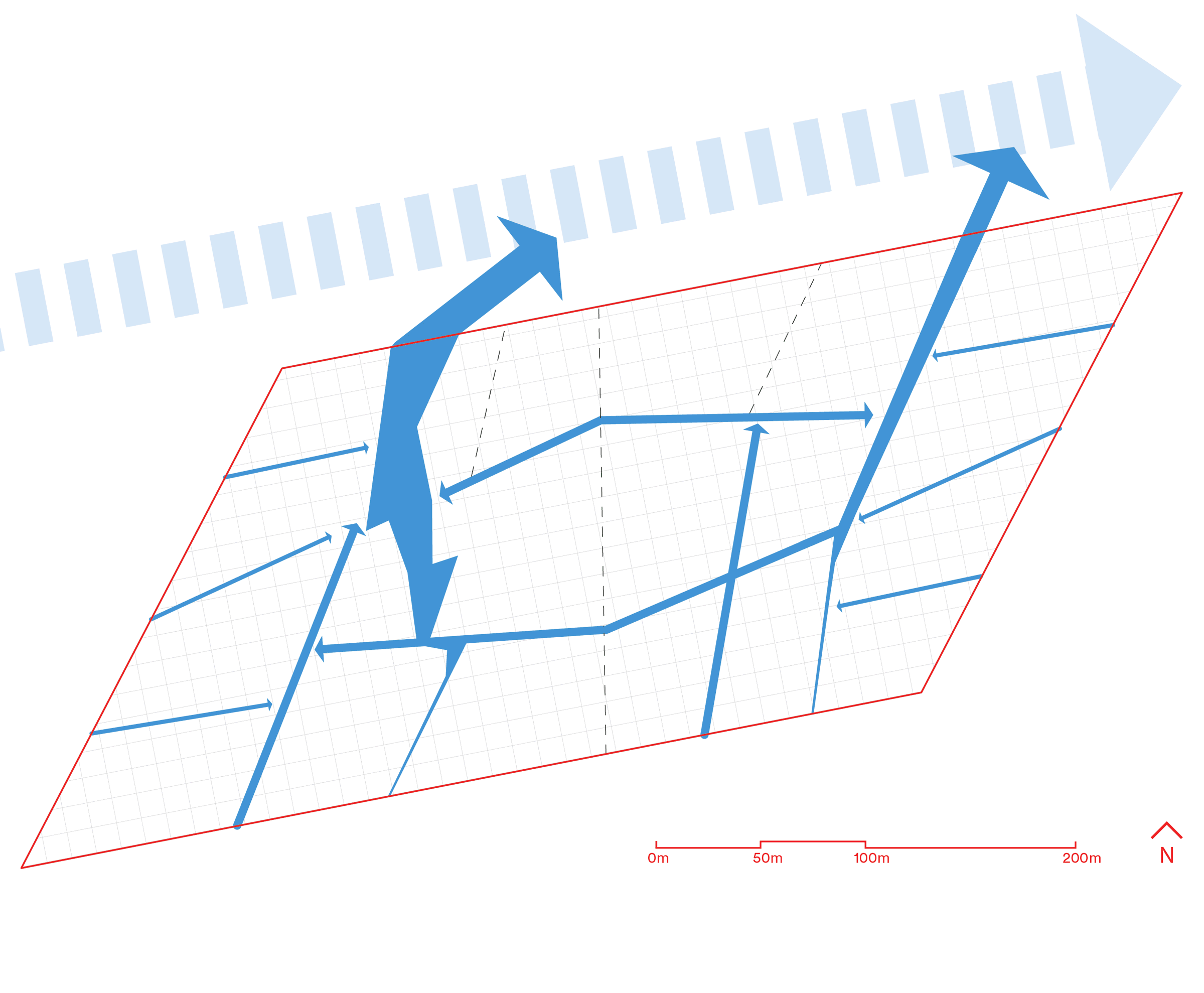
Ecological planning: site drainage; 12m planning grid; houses & 3m planting grid; facetted topography; composite site plan
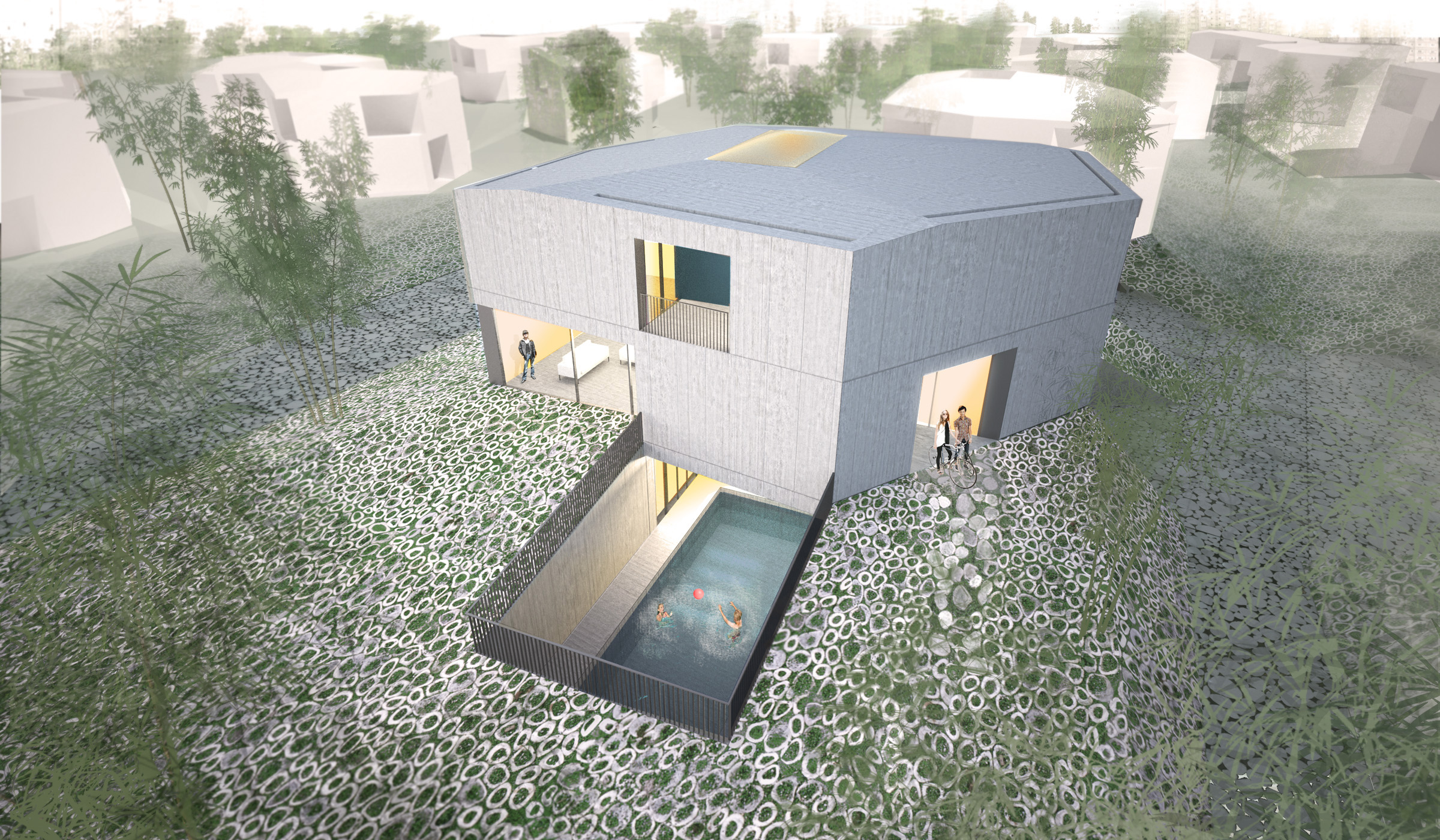
Working algorithmically, within neighborhoods we developed 10 different house plans ranging in size (365 m2 to 539 m2 as dictated by the program). Each neighborhood has the same basic set in different arrangements. Individual houses have variation due to views and optimized local relationships. The largest 2 of the 10 types include private swimming pools.
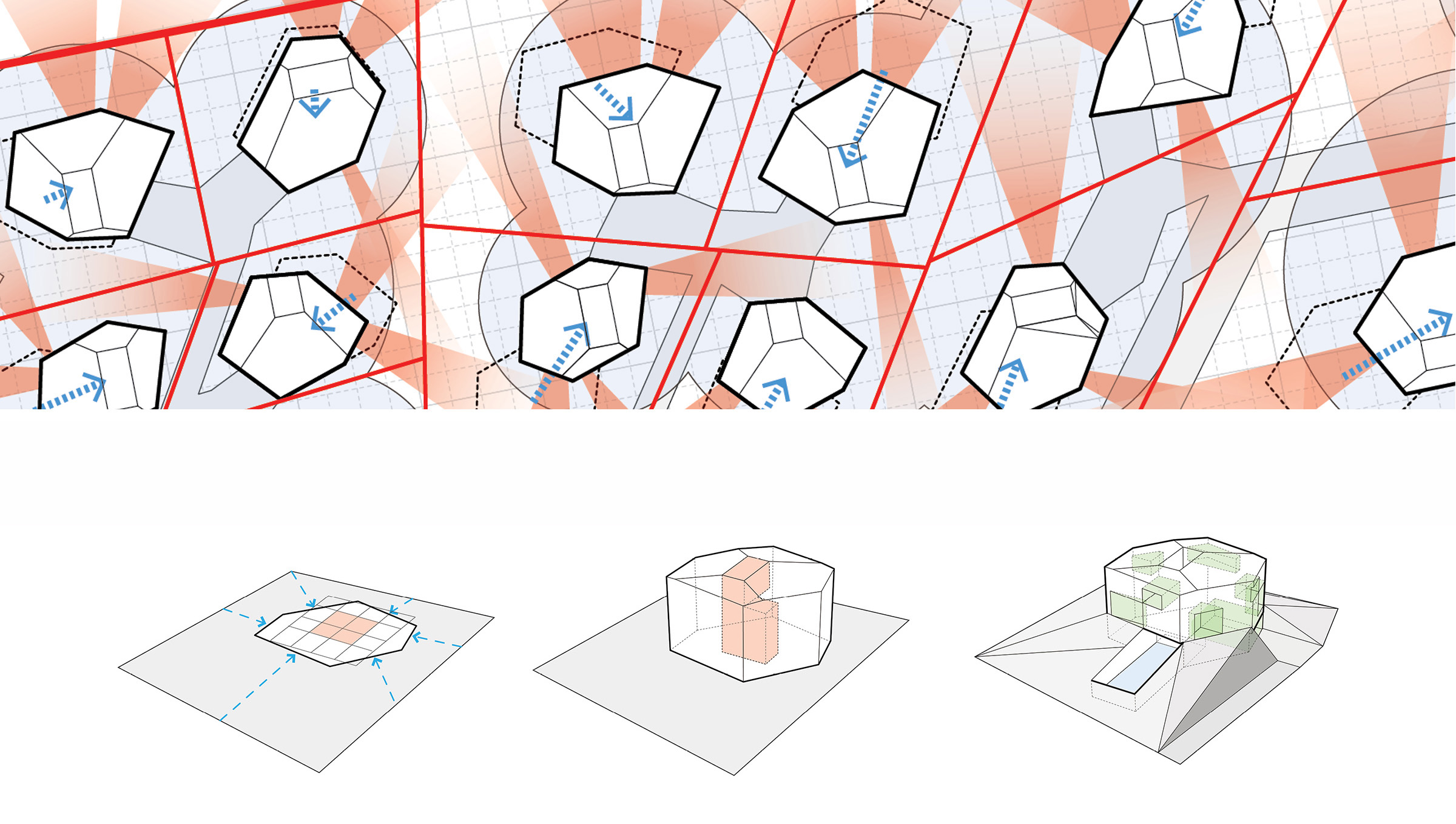
Feng-Shui house adjustments; typical 3m grid and unique site offsets; "courtyard core" & house form; site inflection & openings
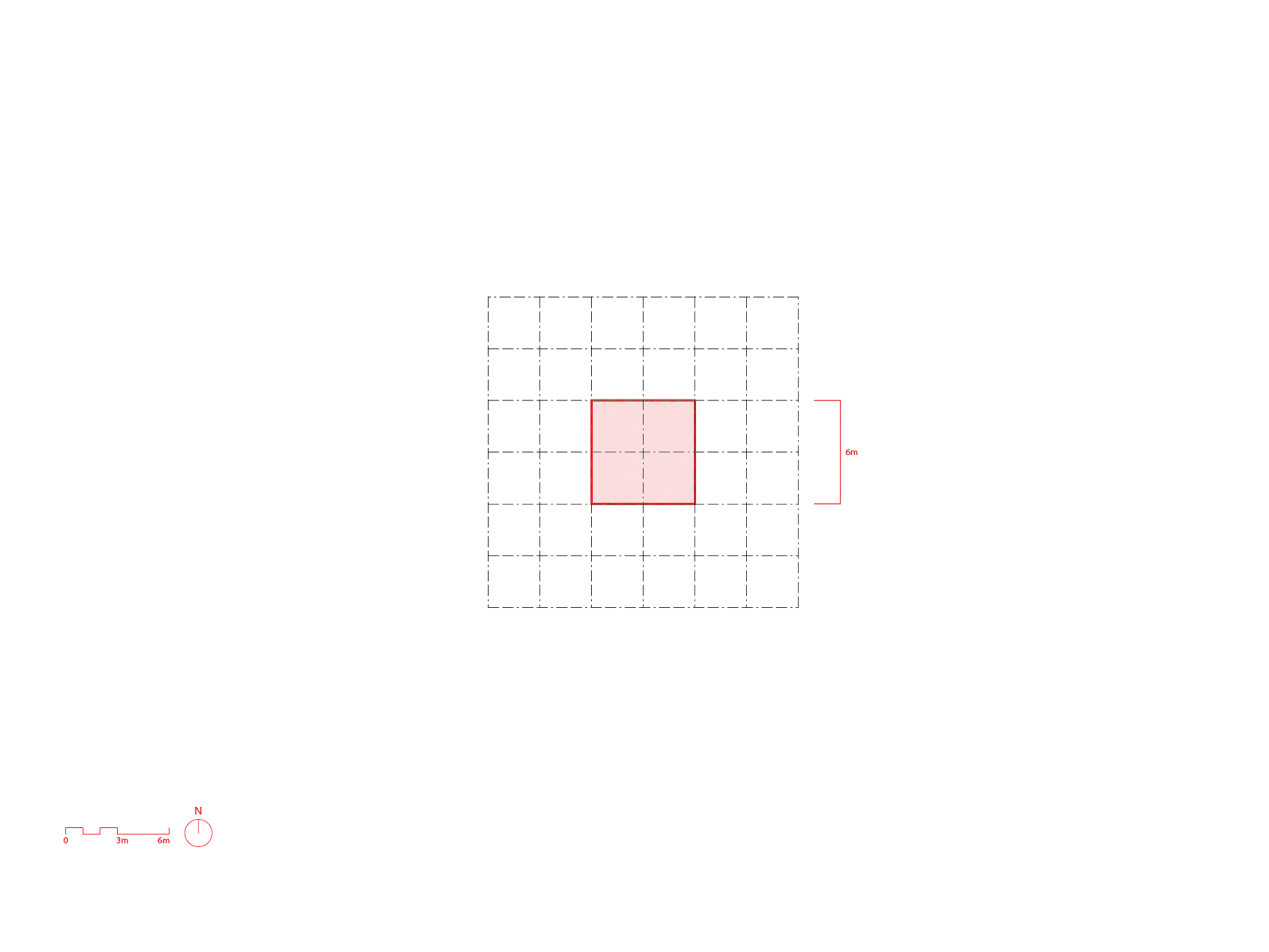
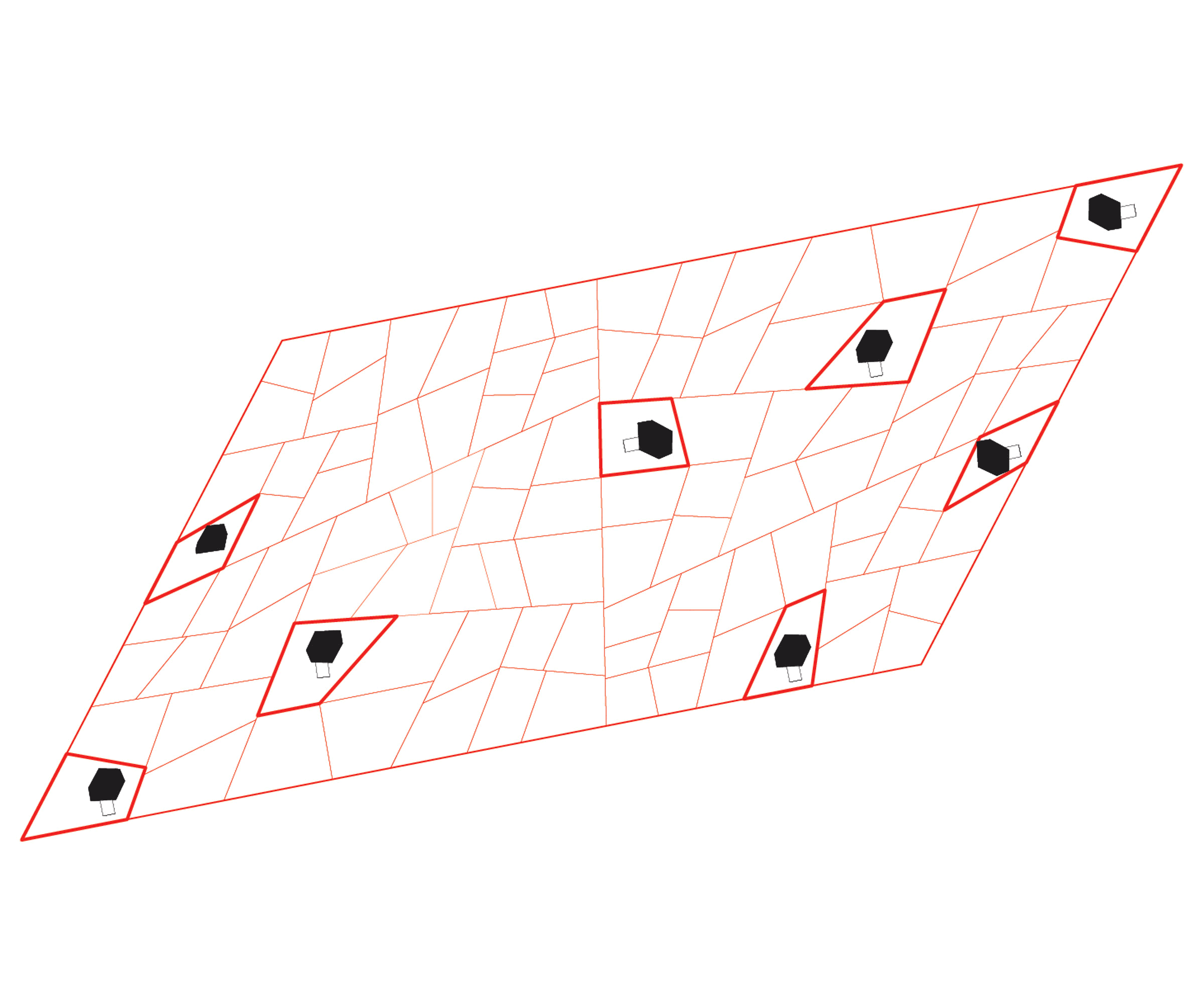
Distribution of house types 1, 5, and 10
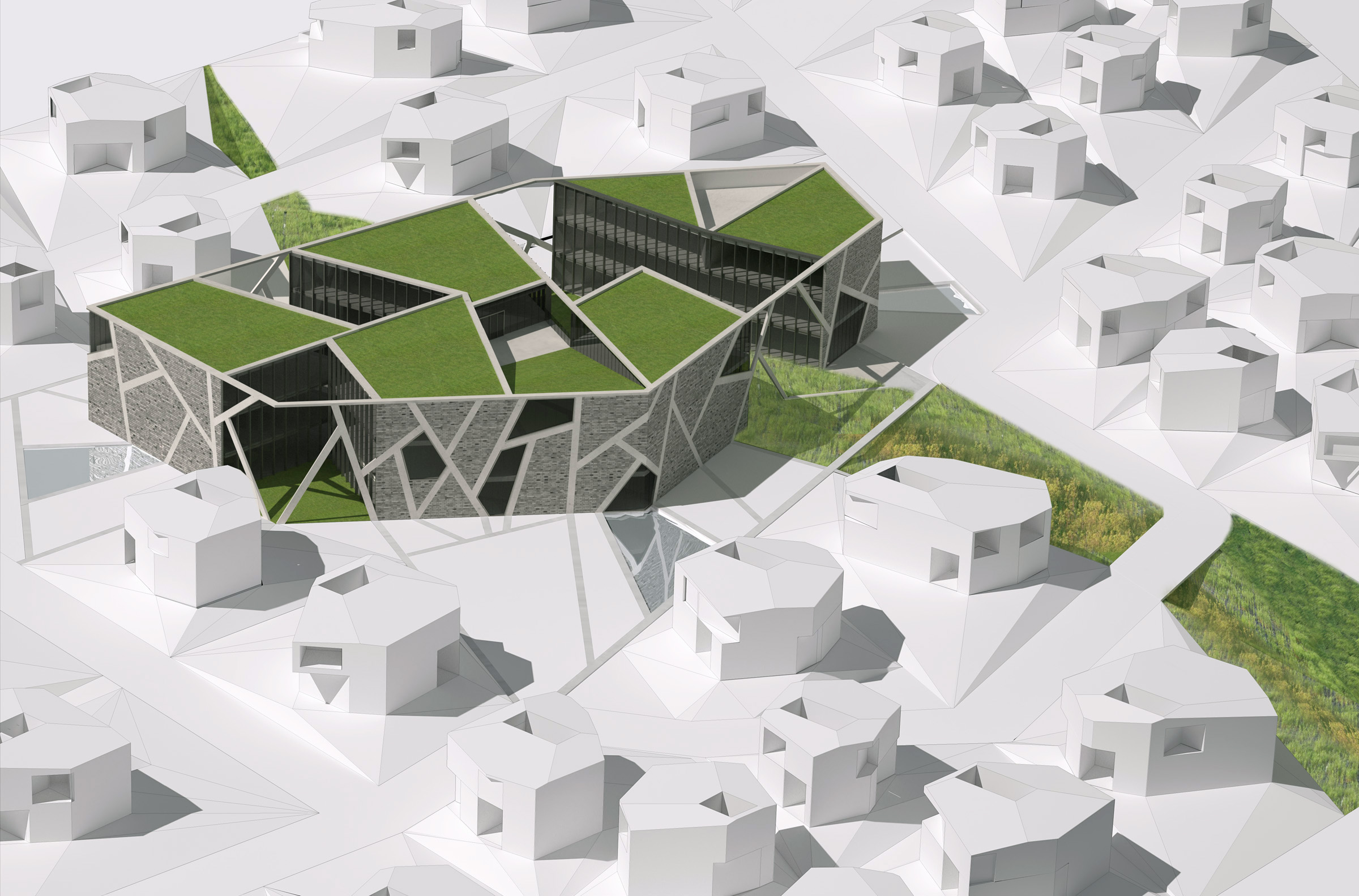
Clubhouse and green infrastructure
(5,000 m2 to 6,000 m2) This community building includes 4 restaurants, 2 swimming pools, 2 cafes, a supermarket, clinic, various game courts and an exercise center. Here the ice-ray pattern becomes visible as a structural system based on a typical Chinese construction system of reinforced concrete frame with brick infill. The structural frames emerge from the site as a scalar reduction of the overall organizational system, – now enveloping the building. Courtyards break up the mass to provide natural ventilation, light and to accommodate the larger of two swimming pools as well as traditional and modern Chinese gardens. The center of the development’s green infrastructure and path system bisects the Clubhouse.
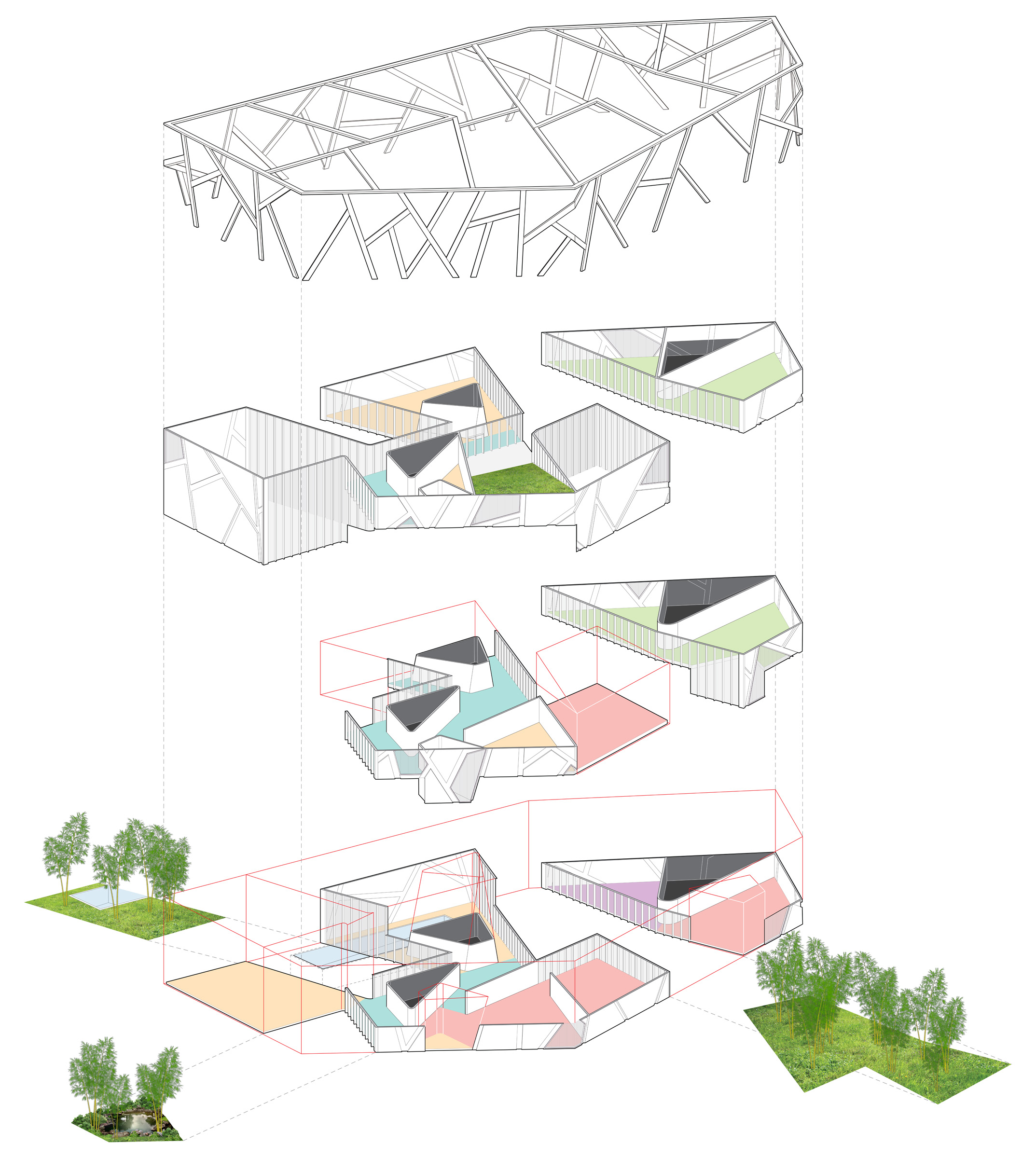
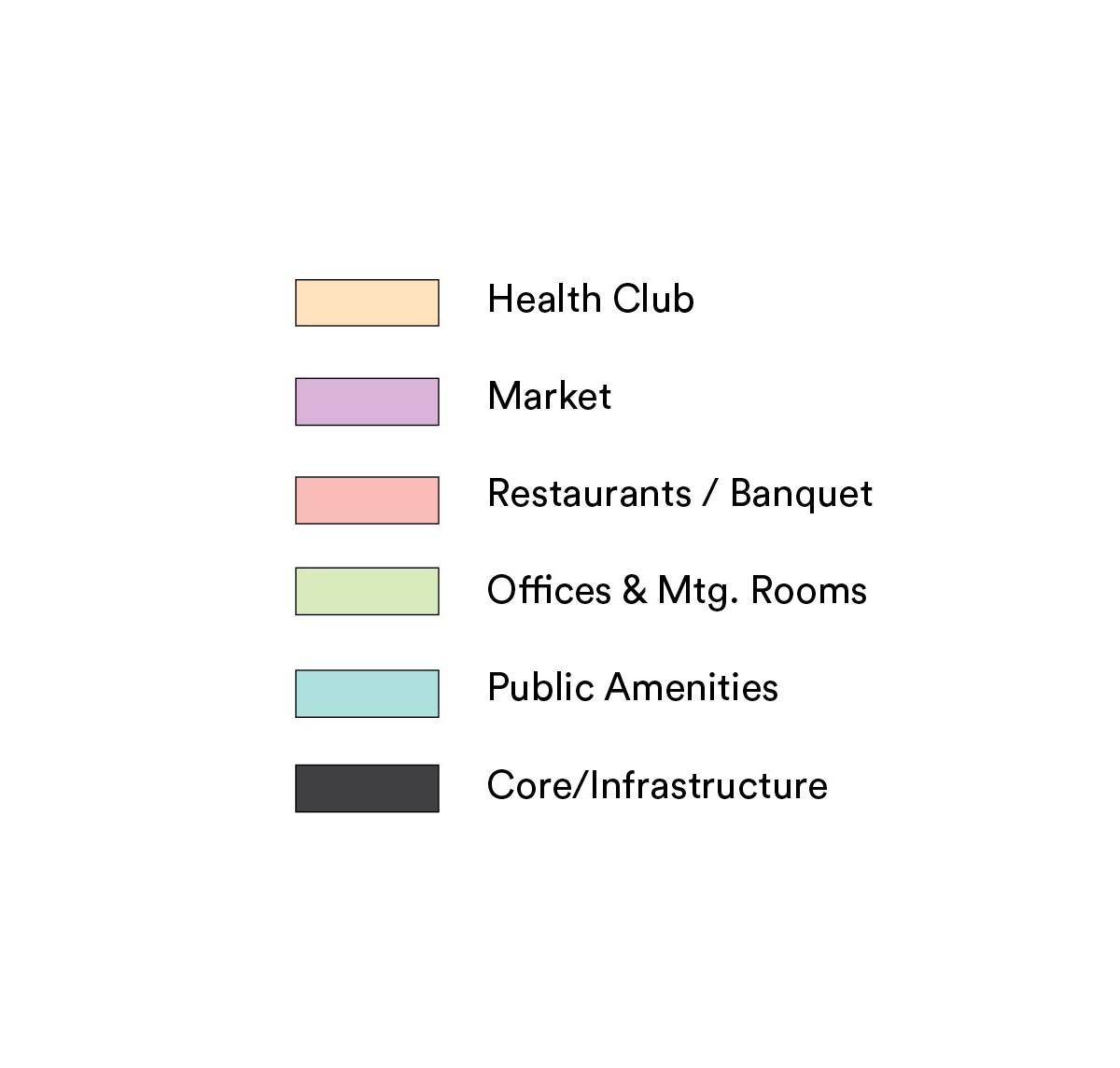
Clubhouse program organized in the three-dimensional ice-ray
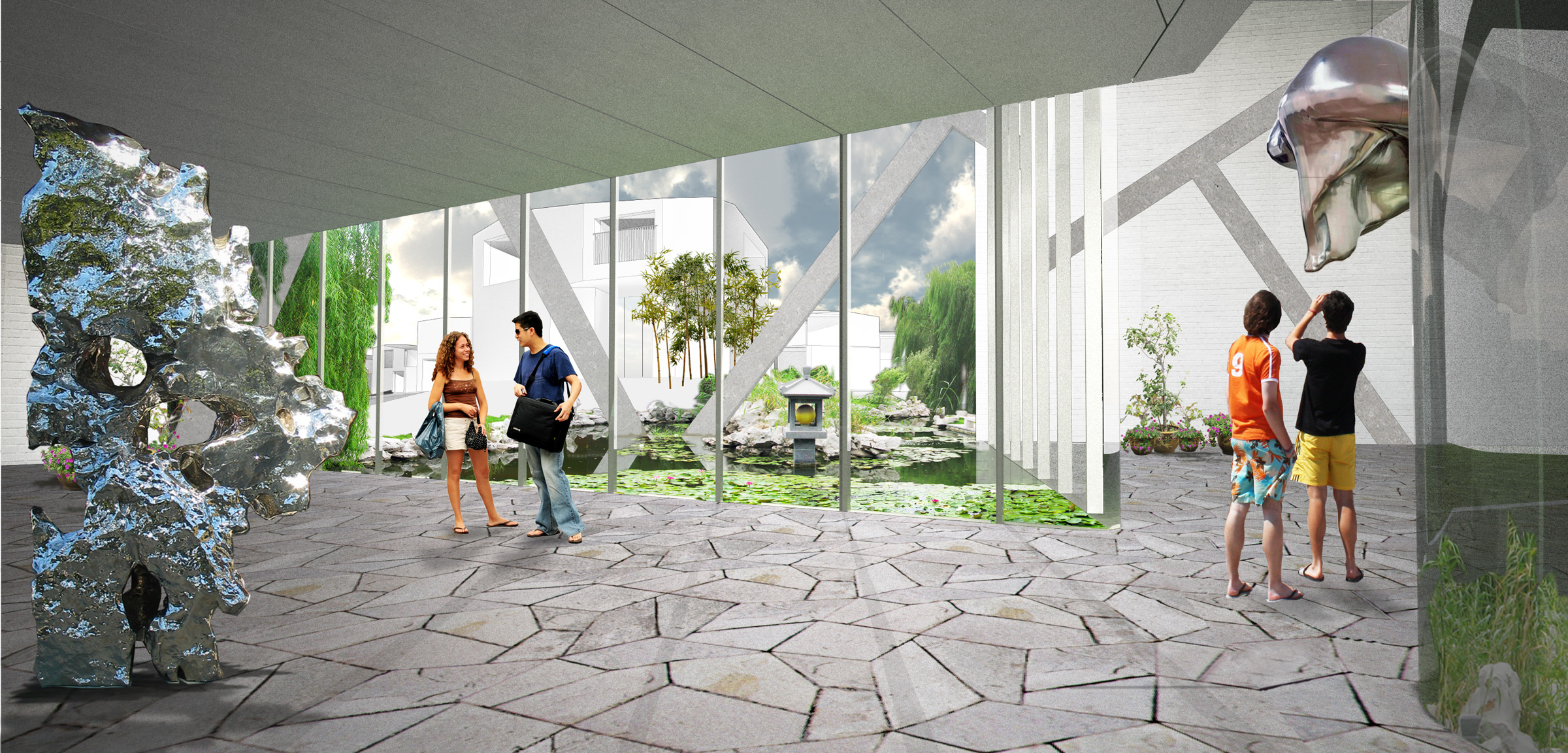
View by Category:
View by Type:
